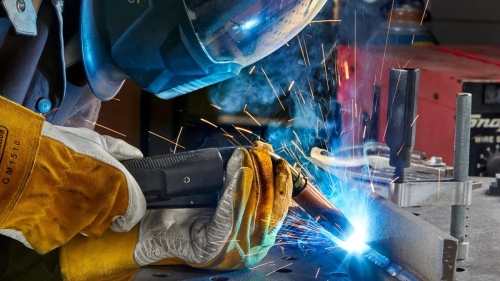Welding technology is a fundamental aspect of modern industry, providing the means to join metals permanently and securely. It is a versatile and essential process used in various fields, ranging from manufacturing and construction to automotive and aerospace industries. This article delves into the world of welding technology, exploring its history, different methods, applications, and the advancements that have revolutionized this critical field.
The Evolution of Welding Techniques
The roots of welding technology can be traced back to ancient civilizations that utilized forge welding to join metals. Over the centuries, various methods, such as oxy-fuel welding and arc welding, emerged and evolved. The industrial revolution brought significant advancements, including the development of electric arc welding, transforming the industry. Today, state-of-the-art techniques, like laser and electron beam welding, have revolutionized the welding landscape, enabling precise and efficient welding applications.

Understanding Different Welding Processes
Welding technology encompasses a plethora of processes, each tailored to specific applications and materials. Arc welding, including Shielded Metal Arc Welding (SMAW) and Gas Metal Arc Welding (GMAW), utilizes an electric arc to create a high-temperature fusion between metals. On the other hand, flame-based techniques, such as oxy-fuel and DIY Steel, rely on burning gases for the welding process. Additionally, advanced methods like electron beam and laser welding offer high precision and energy concentration, making them ideal for intricate and delicate welds.
The Role of Automation in Welding
Automation has revolutionized welding technology, enhancing productivity and ensuring consistent quality. Robotic welding systems have become commonplace in manufacturing, allowing repetitive tasks to be handled with precision, speed, and efficiency. These automated systems reduce human errors, improve weld quality, and enhance worker safety by handling hazardous welding environments. The fusion of welding technology and automation continues to pave the way for innovative applications in different industries.
Advancements in Welding Materials and Consumables
Welding technology is not limited to a specific set of materials. Advancements in metallurgy have introduced new alloys and exotic metals that pose unique challenges and opportunities for welders. Additionally, the development of specialized welding consumables, such as filler metals and shielding gases, has played a pivotal role in achieving strong, durable, and corrosion-resistant welds. Understanding the properties of different materials and consumables is essential for successful welding in various applications.
Welding Inspection and Quality Assurance
The integrity of welds is of paramount importance, especially in critical applications like aerospace and nuclear industries. Welding inspection techniques, such as visual inspection, radiography, ultrasonic testing, and magnetic particle testing, are employed to detect flaws and defects in welds. Quality assurance protocols, including Welding Procedure Specifications (WPS) and Non-Destructive Testing (NDT), are crucial for maintaining the highest standards of weld quality and safety.
Environmental and Safety Considerations in Welding
Welding technology has made significant strides in enhancing efficiency, but it also comes with environmental and safety considerations. Welding fumes and gases can pose health risks to welders, necessitating proper ventilation and personal protective equipment. Moreover, the welding industry has embraced eco-friendly practices by employing energy-efficient welding processes and exploring alternatives to conventional consumables, contributing to a more sustainable future.
Welding Technology in the Digital Age
The digital age has ushered in a new era of welding technology, with Industry 4.0 playing a pivotal role in driving innovation. Integration of sensors, data analytics, and artificial intelligence has enabled smart welding systems that optimize welding parameters, detect defects in real-time, and adapt to changing conditions. Augmented reality (AR) and virtual reality (VR) are transforming welding training, providing immersive learning experiences for aspiring welders.
Future Prospects of Welding Technology
As technology continues to advance, so does welding. The future prospects of welding technology hold exciting possibilities, including advancements in automation, material science, and process efficiency. The integration of additive manufacturing and welding, known as “welding AM,” may revolutionize the way complex structures and components are fabricated. Moreover, the pursuit of greener and more sustainable welding practices is likely to shape the industry’s landscape in the coming years.
